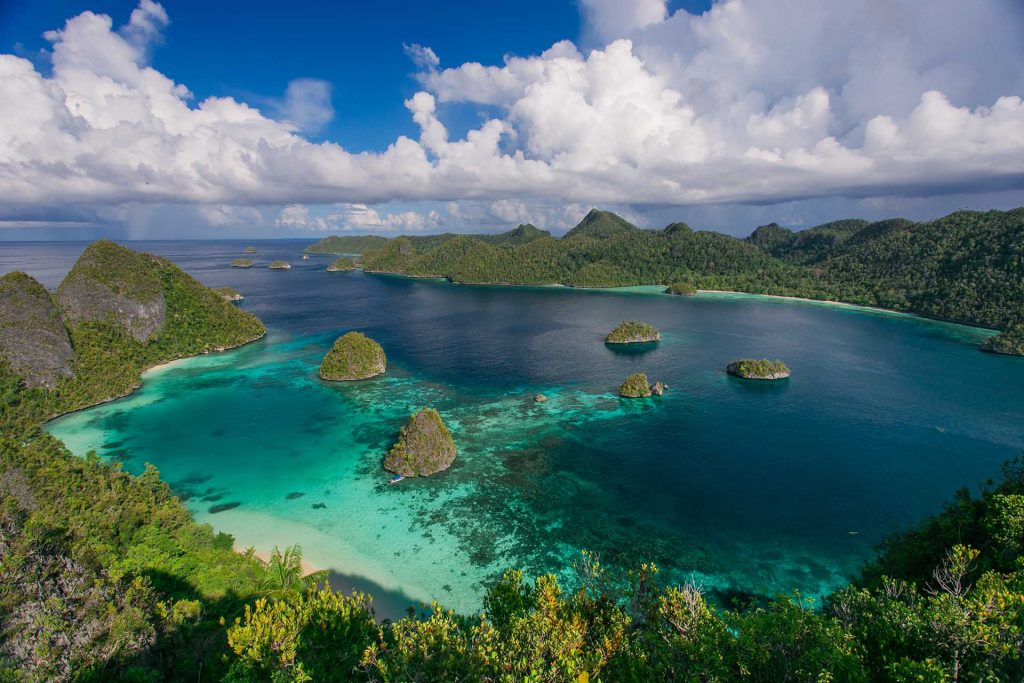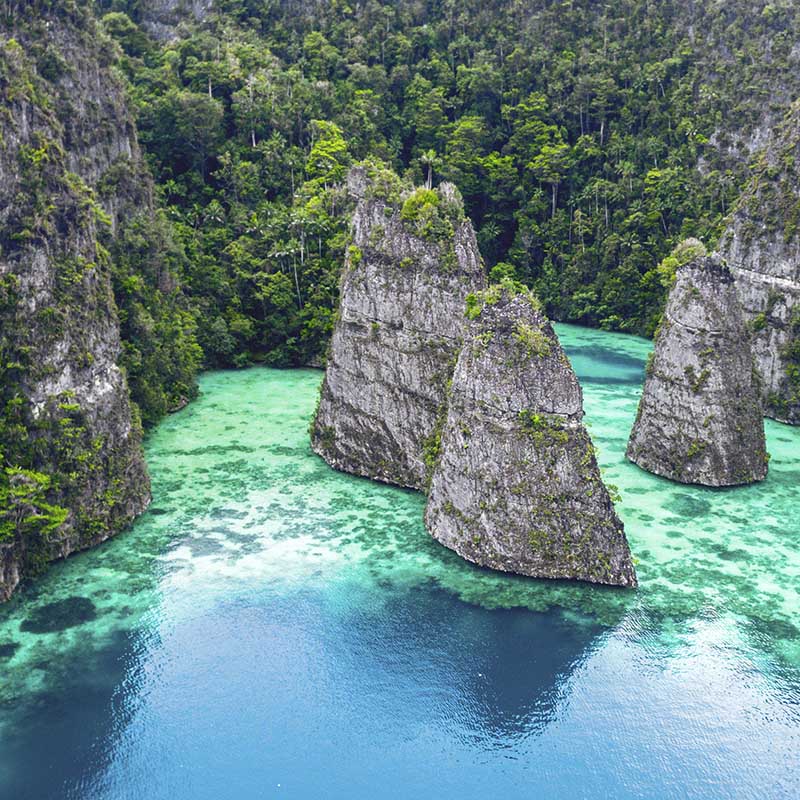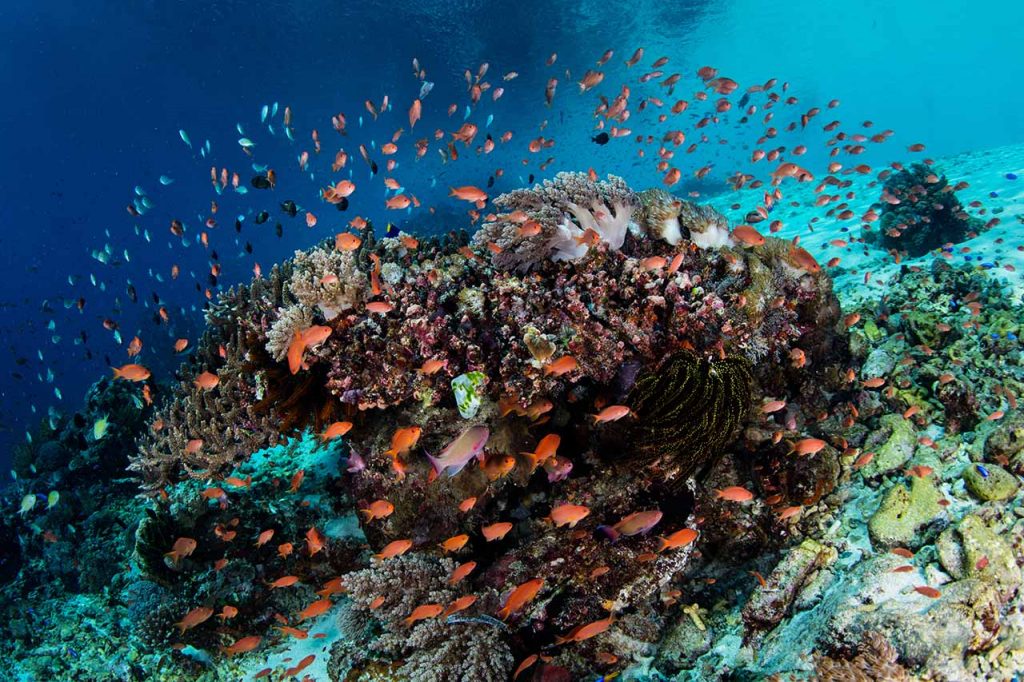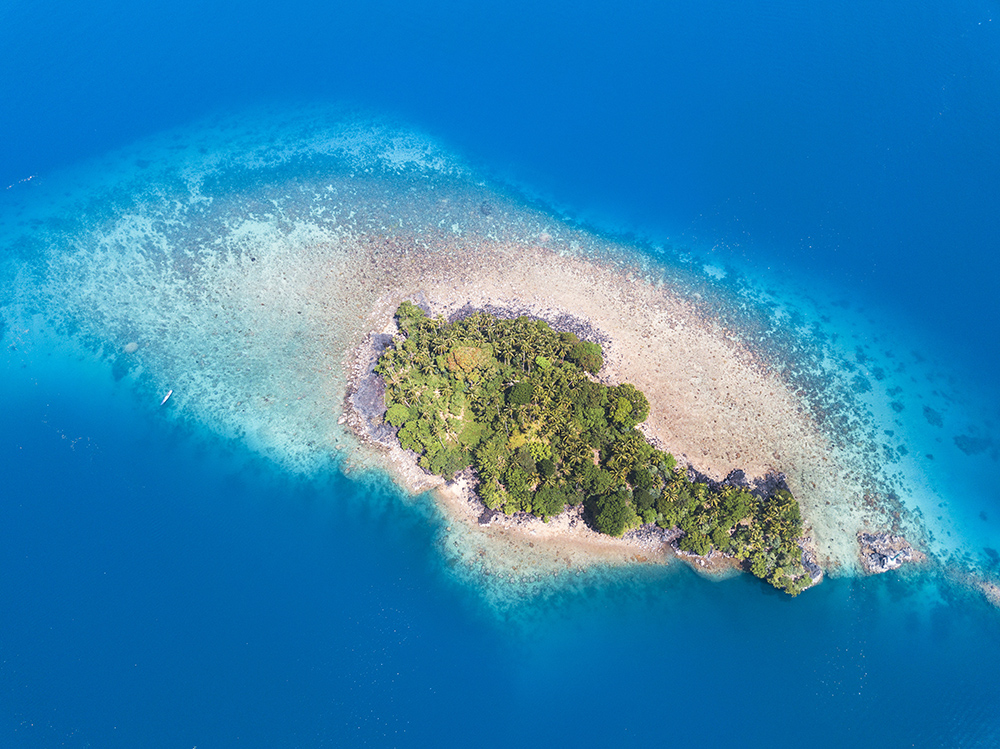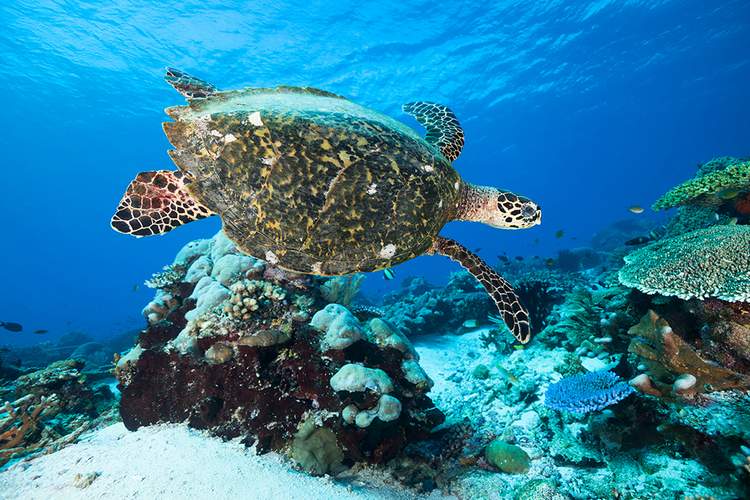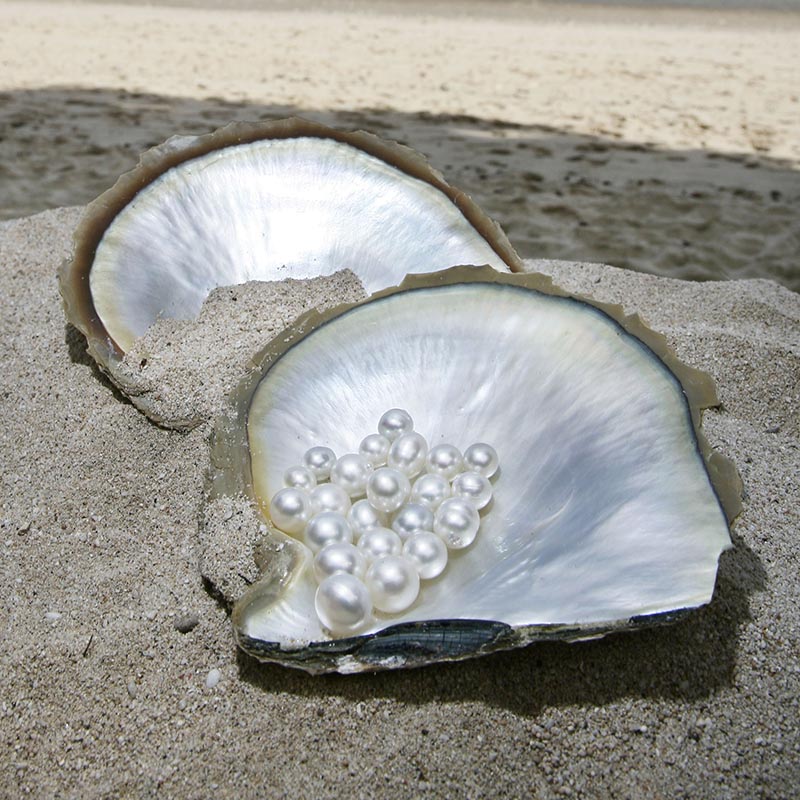Raja Ampat: The Unexplored Jewel in Indonesia’s Crown
The romance of this extraordinary region of Indonesia is embodied by the history of its fairy-tale name which literally translates as ‘four kings’. Local mythology tells of a woman who finds seven mysterious eggs. Immediately after that, four of these hatch and become kings who reign over Raja Ampat’s biggest islands – Waigeo, Salawati, Batanta and Misool. The other three are not so lucky and become a ghost, a woman, and a stone.
This is an area of otherworldly, Jurassic-like beauty characterised by over 1,500 islets. Located off the northwest tip of the island of New Guinea, and part of the West Papua Province there are two main reasons people visit. The first is the spectacular diversity of marine life thronging beneath the waves and the second is that this is one of the most unspoilt and beautiful landscapes left on earth.
Waigeo
Waigeo is the largest of the four islands and is approximately is 3.155 km₂. Sometimes it is also known as Amberi, or Waigiu and is located in the West Papua province, near the town of Sorong. The capital city of Waisai is also to be found here. The Dampier Strait separates this from Batanta Island and in the Northwest, the Bougainville Strait splits it from Kawe Islands.
Densely forested and largely unexplored, the interior of Waigo is a nirvana for wildlife. Furthermore, the coveted crimson Bird of Paradise is found here, along with opossums, snakes, tortoises, frilled and giant monitor lizards, plumed herons, and honeyeaters.
One of the most popular attractions is the wealth of scuba diving and snorkelling sites. Waiwo Beach, for example, has a reef which is approximately 30 metres deep and populated by billowing clouds of tropical fish and black tip reef sharks which patrol the depths.
Misool
Misool is the second largest island and is located just off the coast of Papua, bordering the Seram Sea. Many of the marine animals that thrive in the Pacific swim through these waters turning Misool into another paradise pocket for divers and snorkelers. Moreover, the waters are a well-swum route for larger sea creatures, including whales.
Even if you are not a keen diver, the crystal clear waters allow outstanding views of Misool’s sub-surface world while still on a liveaboard, tender or kayak. Marine biologists estimate the sea gardens of the Raja Ampat region hold 75% of all known species of corals and sea creatures on Earth, therefore boasting the highest level of marine biodiversity on the planet.
Back on terra firma, Misool is equally as impressive. The island is wild and jungly harbouring diverse ecosystems amongst its luxurious vegetation and mangrove swamps. To both east and west, the island has a maze of limestone pinnacles jutting abruptly out of the perfectly turquoise sea, eroded by the endless lapping of the ocean and carpeted abundantly with thick greenery.
There are also a few beaches with idyllic white sand beaches fringed by coconut palms fading gently into a glittering aquamarine sea. It is also worth noting that Misool has a number of petroglyphs, found on walls of caves which date back around 5,000 years.
Salawati Island
At 1.623 km₂, Salawati Island is the 3rd largest island in this sublime chain. It is located on the northwestern side of New Guinea and is only accessible by boat. Remote and uninhabited islands lie peppered throughout the surrounding ocean creating a seascape of unparalleled beauty. Salawati lies immediately to the south of Batanta Island, from which it is divided by the narrow Sagawin Strait.
Scuba diving in Raja Ampat
The list of species spotted here is literally endless, in fact, these waters are often nicknamed the ‘species factory’ One of the most famous sites is Cape Kri because it holds the world record for the most species spotted in one dive. Dr Gerry Allen earned this accolade by spotting a whopping 374 different types of marine life.
Tick off the ‘must see’ list some of the following: varieties of the nudibranch species, sea dragons, blue-striped flagtail pipefish, pygmy seahorses, green sea turtles, giant Napoleon wrasse, and Indian lionfish. Likewise, there are abundant corals gardens and sea fans that serve as homes for large groups of small fish. In short, Raja Ampat is a scuba divers dream.
Other jewels in the crown of the four kings
Although one of the main reasons that people make the effort to go to this remote area is the teeming oceans, there are many other memory making moments on offer. These include the sheer untouched nature of the region and a few gems nestled away on the islands themselves.
For instance, visit the Atlas Pearl Farm at Alyui Bay, a dazzling location where some of the world’s best South Sea pearls are found. Tour the farm and learn more about these natural wonders. Afterwards, you can purchase loose pearls and jewels are available as prized mementoes.
Additionally, visit long forgotten tribes where the local people live as they have for thousands of years. For instance, the villagers in Arborek, always look forward to visitors and love to show their unusual handicrafts created from sea pandan leaves.
A Luxury Live Aboard Experience
The best way to get the most out of your visit to Raja Ampat is to stay on a luxury liveaboard. This way you can visit some of the most idyllic spots and live in total comfort in-between adventures. Prana is the ultimate Phinisi liveaboard with 9 cabins, 3 decks, a cinema under the stars and a fully dedicated spa. Onboard this luxury yacht, you can also find a host of water sports from scuba diving to kayaking and wakeboarding.

